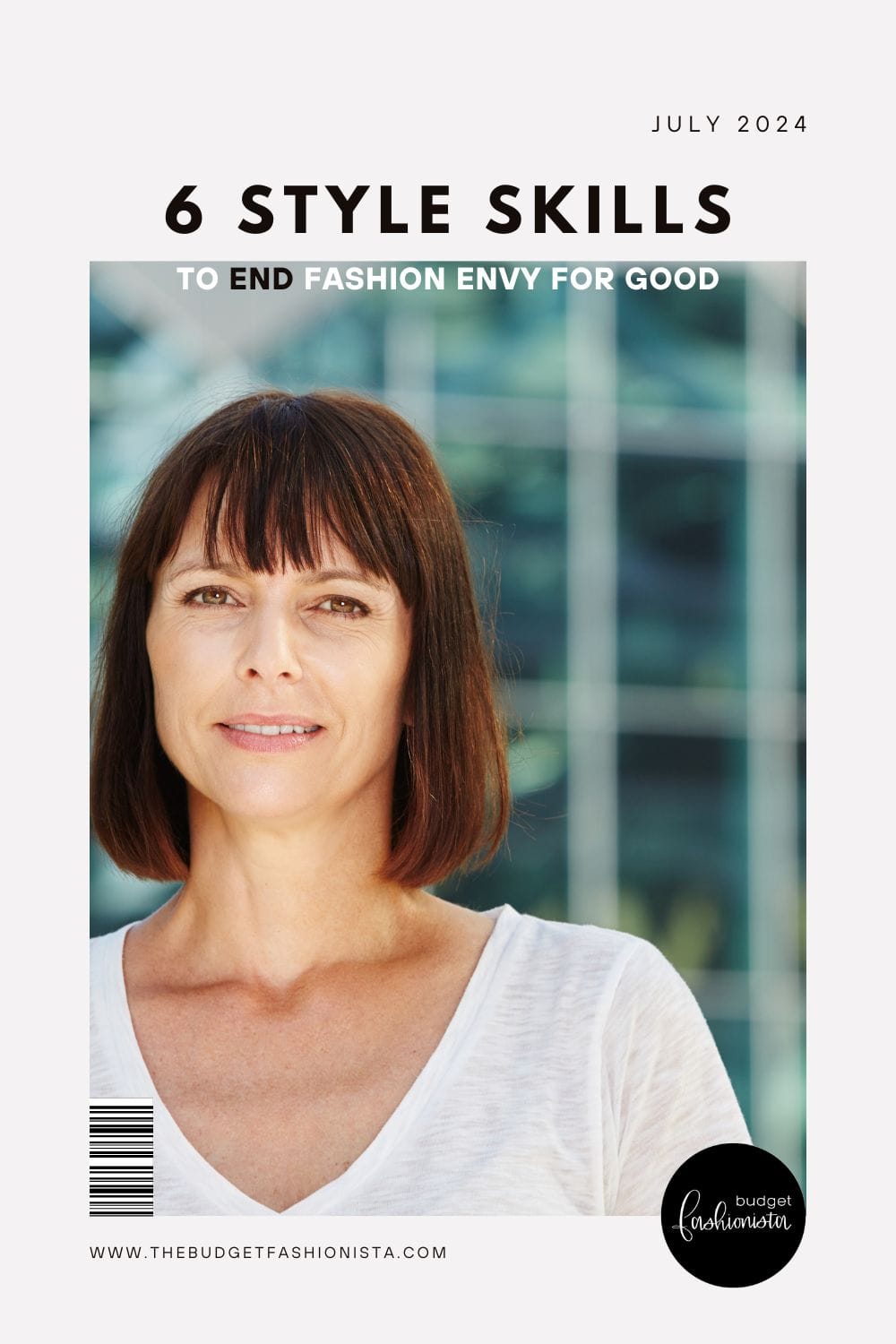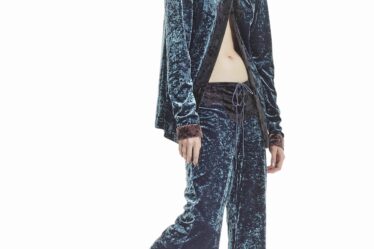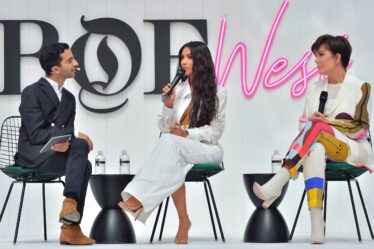
What’s trending in fashion is almost always expensive. And that can leave budget-oriented ladies feeling annoyed, frustrated, or hopeless. You know what I’m talking about if you’ve ever walked this path:
- You find a garment you love.
- You realize too late that the price point is way outside your budget.
- You wonder why you only like the high-end stuff.
I could rant here about the negative influence of social media and its endless supply of beautifully styled celebs and influencers — who have massive budgets or access to free pieces from the priciest labels. But I’ll spare you that unpleasantness.


Instead, let’s explore practical solutions for achieving the style you want within your budget. Because it’s time to end that conflict between what you like and what you can afford. And you can do it by learning the six style skills below.
Focus on style
Focusing on style over labels and logos shifts your attention to getting what you want vs. wanting what you can’t have. This is a subtle change in thinking, but it works.
Say you spot a pretty silk scarf from D&G online. Or, you see an influencer sporting a handcrafted leather accessory from French designer Jerome Dreyfuss. You could respond by reaching for your credit card or lamenting your lack of resources.
But a more productive response is to consider what you really love about the coveted piece. Here’s why. Whether you adore the color, silhouette, quality fabric, or something else, you can probably find a lower-priced option that checks the same box.
The first step to finding a low-priced dupe is defining the must-have quality. This turns your vague garment envy into something specific and actionable. From there, you can evaluate the need, as in: How often will I wear a yellow scarf with an intricate Italian print? If you decide the need is real, you can begin the hunt for a lower-priced alternative.
Develop an eye for quality
Often, quality is the most obvious difference between high-end and low-end pieces. Developing an eye for the signs of a well-made piece will help you find the gems of clearance racks and low-cost retailers.
Visual cues of quality to look for include:
- Natural materials such as cotton, silk, wool, linen, and leather
- No pilling or shedding
- Smooth, consistent texture
- Tight, even stitching
- Neat inside seams
- Ample seam allowance so the garment can be altered if needed
- Straight hems
- Stitched buttonholes and securely fastened buttons and notions
- Linings
Sadly, checking the garment’s quality is only possible when you’re shopping in-store. For online purchases, you must rely on brand reputation — which can raise the price point — or a generous return policy.
Know your lifestyle
One overlooked strategy for managing your clothing budget is limiting the purchases you don’t need to make. I’m talking about the edgy v-neck sweater that has no place in your life or the too-tight dress that doesn’t suit any occasion on your calendar. Not buying those pieces saves you money and frees up space in your closet.
To cut back those unnecessary, get firmly in touch with your lifestyle. Start by defining what you do every week across work and play. Maybe your main activities are working in a conservative office, running trails in the woods, and transporting kids to sports events.
When you go shopping, make sure you’re only buying clothes to support those activities. For everything else, including the occasional fundraiser or girls’ night out, consider borrowing, renting, or buying used.
Sort your stuff
A related strategy is organizing your closet by activity. You might have one section for work, one for weekends, and one for your favorite hobby. This organization method keeps you current on available inventory so you’re making full use of your clothes.
The idea is to avoid buying a softshell black blazer when you already have one hanging in your closet.
Choose a palette
A well-defined color palette can help you maximize the mix-and-match opportunities in your wardrobe. The more ways you can combine the pieces you have, the fewer pieces you need to support your lifestyle.
You might start by defining your favorite neutral. For example, do you prefer a warm beige over a cool gray? Then build your palette from there. The most versatile approach is to curate a mostly monochrome wardrobe that relies on accessories for color. But if that sounds too boring, you can invest in a range of colors that generally go well together such as blues and oranges or purples and yellows.
Accessorize boldly and cheaply
Trendy garments add fun and variety to your wardrobe but have a short lifespan. Rather than invest in tops and bottoms that follow the trends, it’s cheaper to get the variety you crave from accessories. Ideally, cheap accessories.
Use belts, scarves, hair clips, and even makeup to emulate the season’s hottest colors and patterns. If your primary pieces are mainly monochrome or neutrals, your trendy accessories will pop — and, truly, no one will notice you’ve been wearing the same blouse on repeat.
No more wanting what you can’t have
Occasional fashion envy can be motivating. It might drive you to carve out a monthly savings deposit or finally get that side hustle going. But motivation dries up quickly when you’re constantly wanting stuff you can’t have. That’s when it’s time for a change.
Switch up your mindset by focusing on style and quality and narrowing your purchases to a defined palette that matches your lifestyle. When you need that something extra, get it from an accessory you found at a budget store. That’s a solid formula for upgrading your style without overspending.
PSA. It’s time to dump Google and switch to Ecosia. Get answers faster and make the world a better place. Download the Ecosia iOS app and make Ecosia.org your browser’s homepage.



